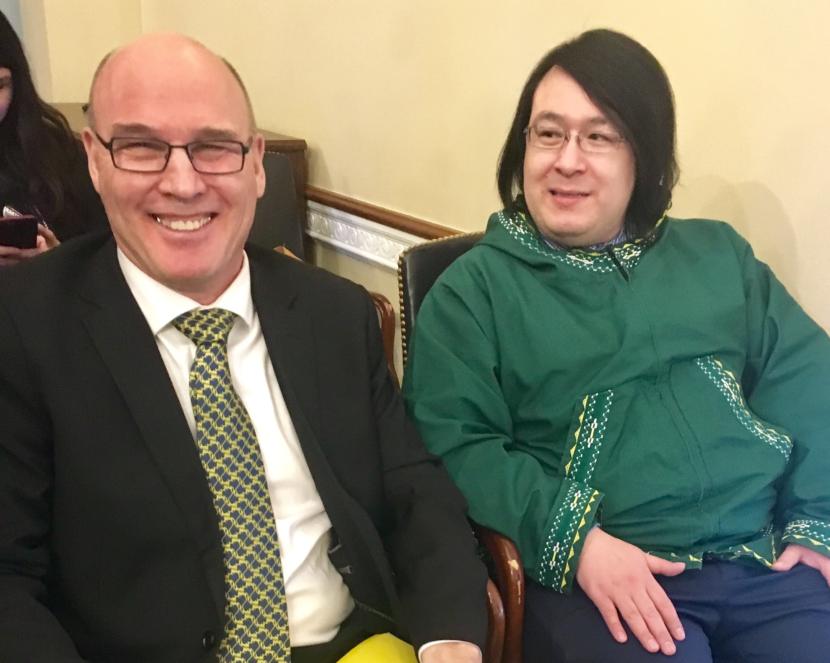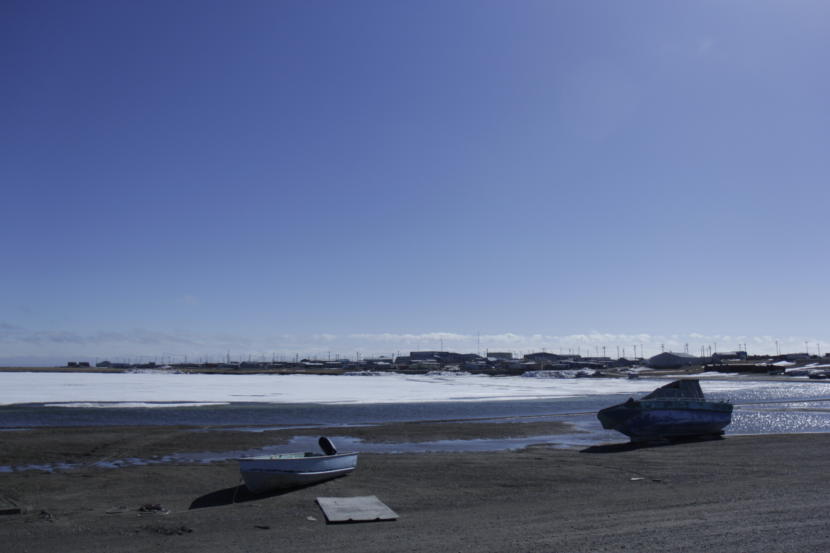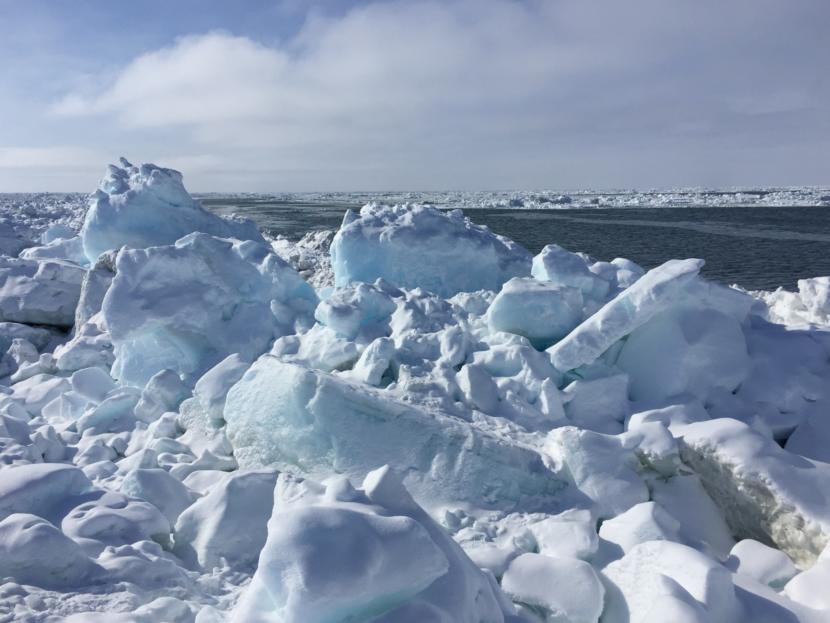
Richard Glenn is an inconvenient truth for those who want to stop drilling in the Arctic National Wildlife Refuge.
In congressional hearings, he presents a challenge to the narrative prevalent in Washington, D.C., that Native people oppose development in the Arctic. Glenn has been a compelling witness in favor of drilling in ANWR for about 20 years.
Sen. Maria Cantwell, D-Wash., looked past Glenn as he waited to testify in front of the U.S. Senate Committee on Energy and Natural Resources at a 2017 hearing on ANWR. She said she was disappointed there weren’t more tribal members on the witness list.
“Individual tribal members, as we have seen throughout Alaska and throughout the United States of America, don’t support this kind of development because they believe in the wildlife nature that God has given us and that we are stewards of Mother Earth,” she said.
That generalization, from the committee’s top Democrat at the time, put Glenn in a slow burn.
Glenn is executive vice president for external affairs at Arctic Slope Regional Corporation. ASRC and its Iñupiat shareholders stand to profit from drilling in ANWR. When it was his turn to speak, Glenn pointed out he is also a member of a tribe. So were three other Alaska Native witnesses who testified for drilling.
“And I was particularly stung by the ranking member’s comments that she didn’t see tribal members,” Glenn said. “Maybe she just didn’t find enough tribal members that agreed with her position.”
But Glenn doesn’t match the image some senators have in their heads for what a tribal member should look and sound like. In his dark suit and metal-rim glasses, Glenn wouldn’t have looked out of place in an accounting firm.
And he would not let himself be painted as less Native because he supports oil development in ANWR. He’s Iñupiaq with a deep connection to the ice and soil.
Opponents of drilling say the coastal plain of the refuge is sacred land to the Gwich’in people of the Interior. Glenn told the senators it’s all sacred land, north and south. Lands across the North Slope bear the bones of his ancestors, he said. He meant that literally.
“Some of my ancestors’ bones, my grandfather’s grandmother, are in Prudhoe Bay,” he said. “Others are scattered along the coastal plain, from the Canadian border to Point Hope.”
Glenn told the senators that his people depend on sacred land for both food and resource development. Glenn is comfortable with the idea that land can be sacred and produce oil. Synthesizing the knowledge of two worlds is what he’s all about.

When Alaska’s Energy Desk inquired to Glenn about profiling him, he and the public relations department of Arctic Slope Regional Corporation declined to participate. They insisted the Energy Desk should first profile a pro-drilling tribal representative from Kaktovik, the only community in the refuge. And it’s easy to see why they might want that. The anti-drilling side sometimes portrays the battle over the Arctic Refuge as for-profit corporations fighting tribes. Money versus culture. Suits versus moose-hide vests.
But from Glenn’s perspective, it’s not that simple. And he has told his story before.
“I was born in 1963, in Mountain View, California,” Glenn said when Karen Brewster interviewed him in 2016 in his home in Utqiaġvik for an oral history project.
Glenn told Brewster his mom is a daughter of the Ahmaogak family from Utqiaġvik, also known as Barrow. His dad is a son of Nebraska, sent to the Arctic to work on the Distant Early Warning Line, or DEW Line — the Cold War-era early warning radar system.
“And in those days, you weren’t allowed to fraternize with the locals,” Glenn said. “But there were a few Barrow people who worked out on the DEW Line station. And they like to say they played cupid for my mom and my dad.”
The young couple left the North Slope when Glenn’s dad took a tech job in what would soon be called Silicon Valley, so Richard was born and grew up in the Bay Area. Richard and his siblings learned Iñupiaq from their mom, and they knew other North Slope families living in that part of California. They also had a stream of visitors going to and from Barrow.
“So we had a communications network,” Glenn said. “Everyone had Eskimo food in their freezer all the time.”
His first trip to Barrow, aside from when he was a toddler, was at age 13. It was a summer of cousins and an introduction to hunting.
“I made a promise to myself that I’d go back, even if my family didn’t,” Glenn said in the interview with Brewster. “So every summer I did, from the day that school was over till the day school started, from seventh grade on. And it was a great upbringing.”
As he learned to hunt — ringed seal, bearded seal and caribou — Glenn began to learn about ice: how to move on it, how to be safe, how it drifts and breaks off. By his 20s, he was on spring whaling crews and became a whaling co-captain.
He became, he said, obsessed with ice. Infatuated with it. He told Brewster he got to double-dip in ice education, with traditional knowledge and a master’s degree in geology from the University of Alaska Fairbanks. Every ice trail he cuts tells a story, and Glenn reads the details.
“You’re looking at that popcorn junk ice that your pick hates to swing on. Or the mud-rich stuff that was born when the slush was dragging the bottom,” he said. “Or this kind of columnar basalt-looking ice that grew all at once and just stayed that way, from birth to — just a flat, tabular ‘bang,’ hit it with a pick, it all breaks like that.”

The Gwich’in say to allow drilling in the Arctic Refuge will destroy their Native way of life. But Richard Glenn sees a fruitful integration. The oil industry pays local taxes, and Arctic Slope Regional Corporation owns some of the subsurface rights in the refuge. As Glenn sees it, oil development provides the cash that allows the Iñupiat to continue to live in the Arctic and teach future generations how to hunt on ice.
“If my DEW Line father and my Iñupiat mother have taught me anything, it’s taught me that there’s these two ways of looking at the world, but they overlap in the middle,” he said at a forum in Washington, D.C. “And if you can find that place where the overlap exists, it’s nothing but pay dirt, as far as good lessons to learn.”
Read and listen to more stories from our series The Future of the Arctic Refuge: Riches or Ruin?
